Last updated on May 31st, 2023 at 06:24 am
Nowadays people who are into gardening don’t only look for plants with a fragrant scent and beautiful striking colors. Plants with unusual shapes like elephant ears have long been a hot topic of discussion among plant lovers. This kind of plant can surely steal the attention of anyone passing by your garden. If you’re looking for a house plant that looks like elephant ears, then this article is specially made for you.
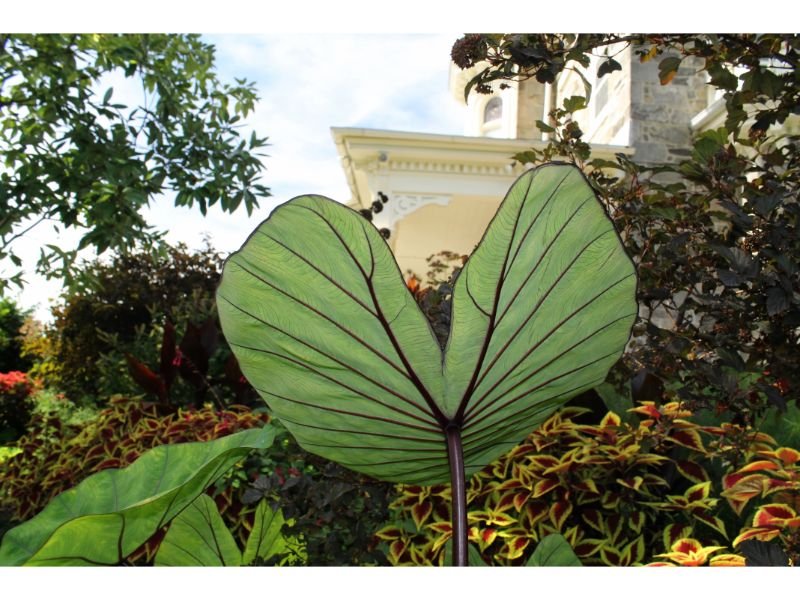
Table of Contents
How to spot plants that look like elephant ears?
You may already know the answer. That’s right, by looking at its shape. Plants that look like elephant ears are mostly big have hardy, narrow heart-shaped leaves with bold vein patterns, and color variations not only limited to green.
They are originally tropical plants that grow in South-East Asia, on the other hand, these perennial plants’ hardiness zones are 9 and warmer. Depending on which species you are interested in, elephant ears plants have tuberous roots.
What are the benefits of growing the elephant ear plant look alike?
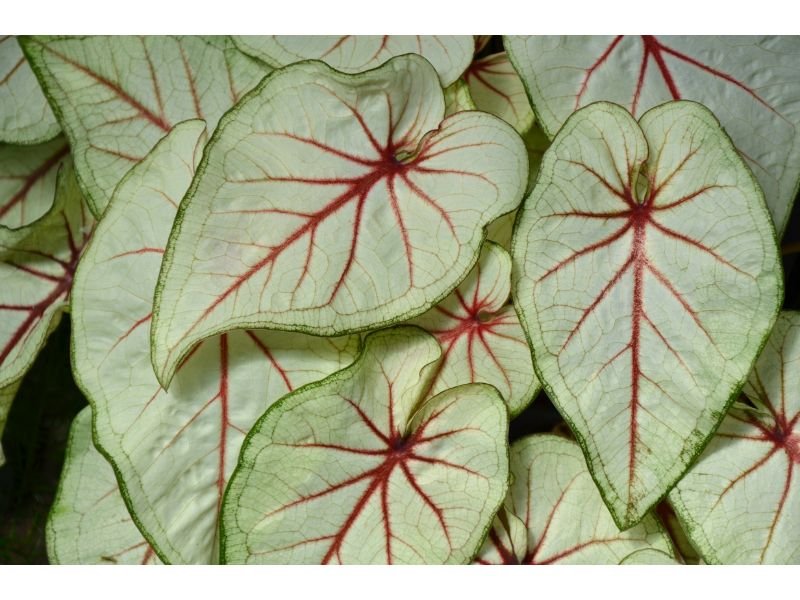
Elephant ear plants are ornamental plants grown because of their large leaves, yet they’re poisonous. You even need to wear gloves to touch the stem and root parts to avoid itching and irritation due to calcium oxalate. Nevertheless, elephant ear plants, especially the young leaves, are rich in vitamins like vitamin C, vitamin B1, niacin, and riboflavin.
The tuberous roots are also as beneficial as the leaves since it contains amino acid and starch. The massive size of elephant ear plant’s leaves is used to absorb carbon dioxide as well, making them one of the best oxygen producers out there!
14 variations of plants that look like elephant ears
Several plants look like elephant ears and the most common species are colocasia, which is also known as taro, alocasia, xanthosoma, and caladium. They are similar in shape but vary in size, species, color, and habitat. Below is the list of elephant ear plant look-alikes to help you choose which type suits your style the most:
1. Philodendron gloriosum
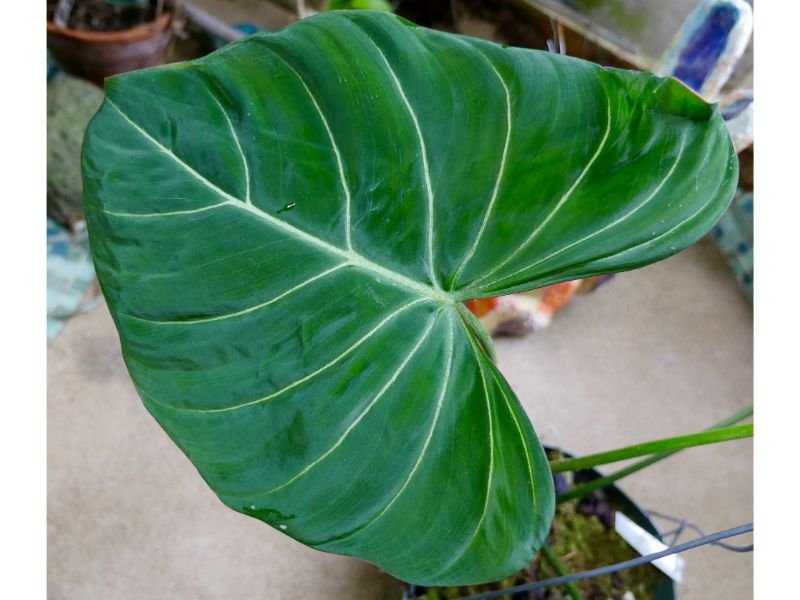
Philodendron gloriosum is a type of toxic decorative plant with a velvety texture and heart-shaped green leaves with white or even pinkish-colored veins. They’re about 30 to 40 centimeters in diameter with a maximum height of about 1 meter. This climbing plant is a slow grower and needs indirect sunlight to grow. Philodendron gloriosum does not require to be watered a lot.
2. Heart fern (Hemionitis arifolia)

Heart ferns are plants that look like elephant ears but are not in the same Araceae family. They are much smaller in size, only around 5 to 10 centimeters in diameter and 15 to 20 centimeters in height. They are non-toxic to both humans and pets but are slow-growers. If you want elephant ear plants to look alike but don’t have a wide space, then heart fern would be your best bet.
3. Anthurium Clarinervium

Sharing the same color and shape, at glance, anthurium clarinervium seems just like another type of philodendron gloriosum. The difference is in the size and the leaves’ vines. Anthurium clarinervium has a more complex greenish-white vein pattern and is much smaller, only about 15 centimeters or larger. In their natural habitat, anthurium clarinervium grows on trees and branches. Do not soak anthurium in water since it can cause rotting.
4. Anthurium Magnificum

Anthurium magnificum is the bigger version of its fella, anthurium clarinervium. As a houseplant, their leaves can grow up to 60 to 150 centimeters, almost the same height as most 12-year-olds! Simply called magnificum, they also shared the same characteristic as anthurium clarinervium.
5. Devil’s Ivy (Epipremnum aureum)

Devil’s ivy or rapunzel plant is a vine that loves a place with lots of moisture. They’re not demanding, you just need to check if the topsoil is fully dry then you should water them. The best part about devil’s ivy beside the elephant ear look alike? They are fine in almost any light circumstances, but they do grow better if you give them a much brighter place.
6. Arrowhead plant
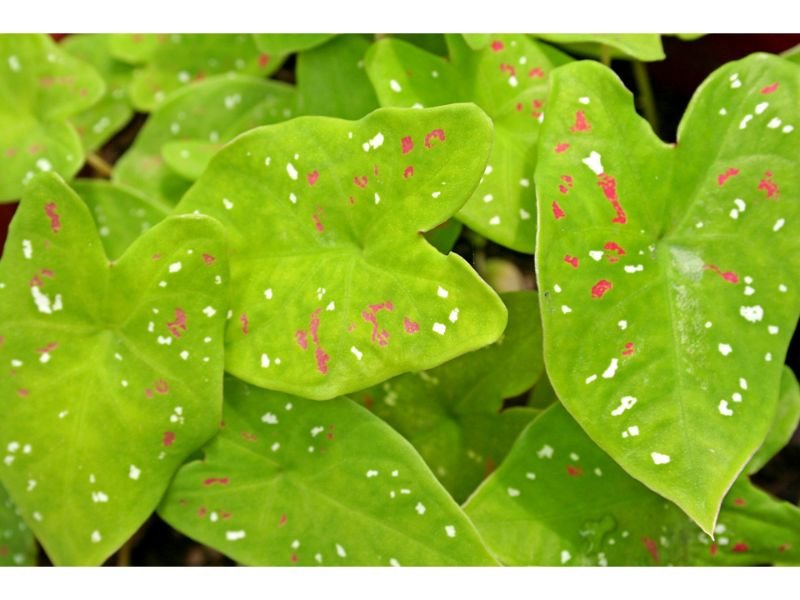
Are you looking for an elephant ear plant look-alike that is not just green or white? Arrowhead is your answer. From dusty pink and creamy white to lime greens, those are the color variations you can choose from arrowhead plants. But they are not so mini, growing around 90 to 183 centimeters in height when mature.
7. Jack Frost

One of the unforgettable things about jack frost is its unusual looks. This elephant’s ear-shaped plant leaves are covered in white, showing only its vines, making it as if it’s covered in snow. Another plus point? Jack frost or known as Siberian bugloss in some places has small light blue forget-me-not-alike flowers that grow throughout April and May.
8. Hostas

Hostas are other plants that look like elephant ears but are not since they’re part of the Asparagaceae family. They need soil with acidic pH to grow and mostly outdoor plants. You can plant hostas indoors, but it would be quite challenging. This plant varies in size. The smaller one is no less than 22 centimeters tall, while the biggest one could be more than 122 centimeters tall.
9. Charming Dieffenbachia

Charming dieffenbachia is a tropical decorative plant from the same family as elephant ears. Provide them with indirect light and high humidity. Keep them away from pets since they’re highly poisonous for pets but moderately poisonous for humans.
10. Homalomena
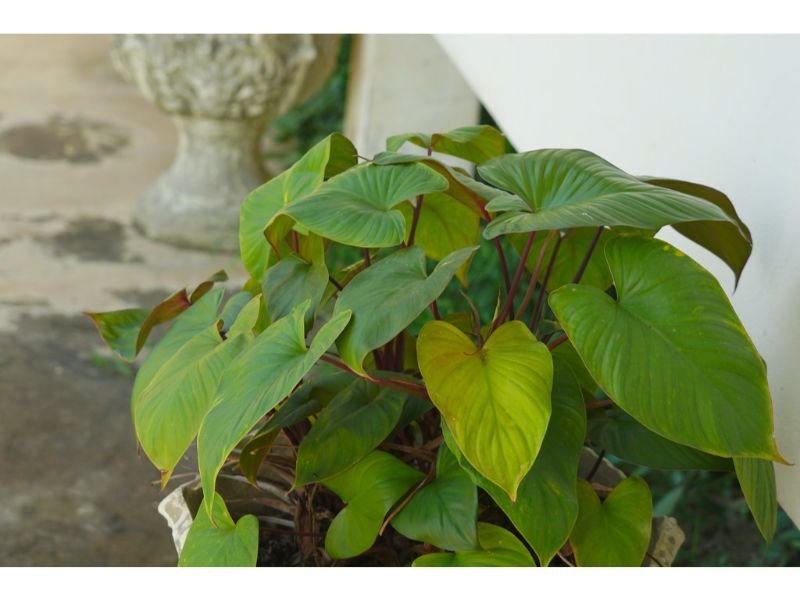
Homalomena is a glossy leafy tropical houseplant that is relatively easy to grow and disease-resistant. A relative to philodendrons, homalomena will grow best under the temperature of 16 to 32 celsius and they love moisture! So keep the soil to be not too dry nor too damp.
11. Alocasia
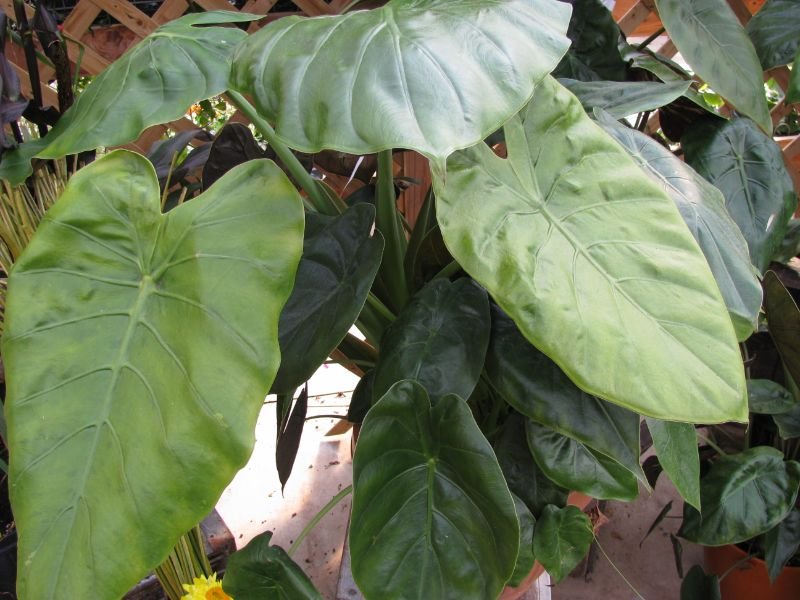
There are over 90 species of alocasia. They can be planted both indoors and outdoors but you need to use different techniques. To grow alocasia indoors, you need to place them in an area with high humidity and enough light. While outside, the light requirements are between partial to full sunlight, depending on the variety and in what month you plant them.
12. Colocasia
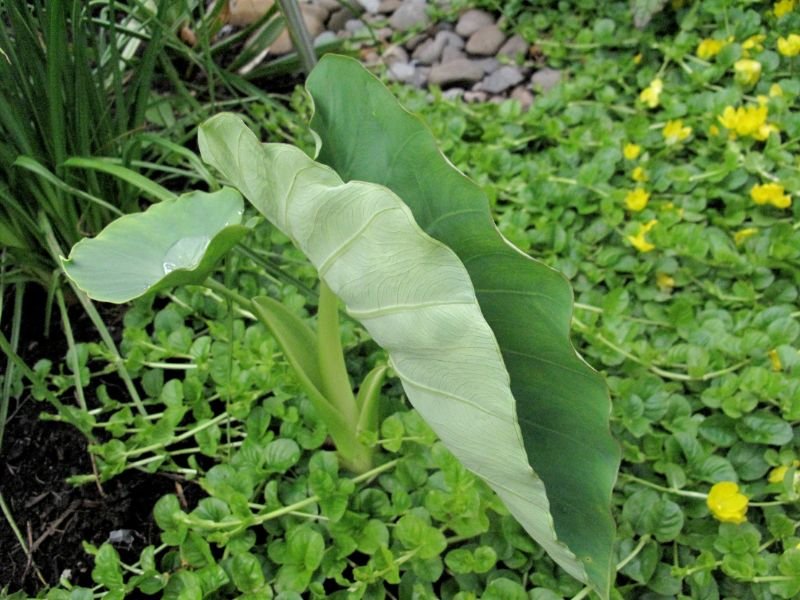
Colocasia is one of the most prominent plants that look like elephant ears. They’re severely poisonous, containing chemicals like calcium oxalate crystals that can cause severe pain if eaten. But colocasia is edible once cooked, and even used in some Asian traditional cuisines. The largest species, Colocasia gigantea, can grow to 150 centimeters in width. With that size, you can make them as a natural umbrella when it rains!
13. Caladium
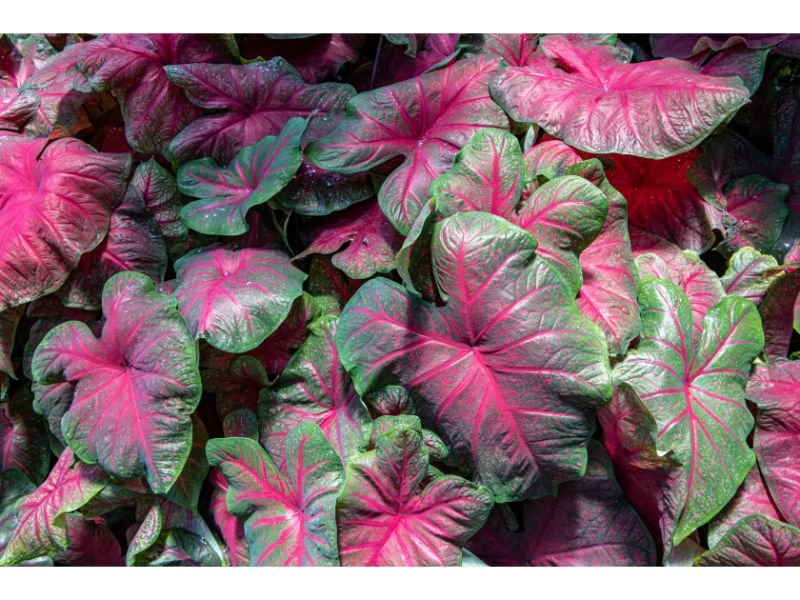
Caladium is considered an “old-fashioned” plant and has been cultivated in Europe since the late 1700s. This elephant-eared-shaped, tropical plant won’t grow until the temperature is at least 21 celsius with high humidity and indirect sunlight. Each cultivar is varied in colors, from creamy white to shades of pink and green.
14. Xanthosoma lindenii
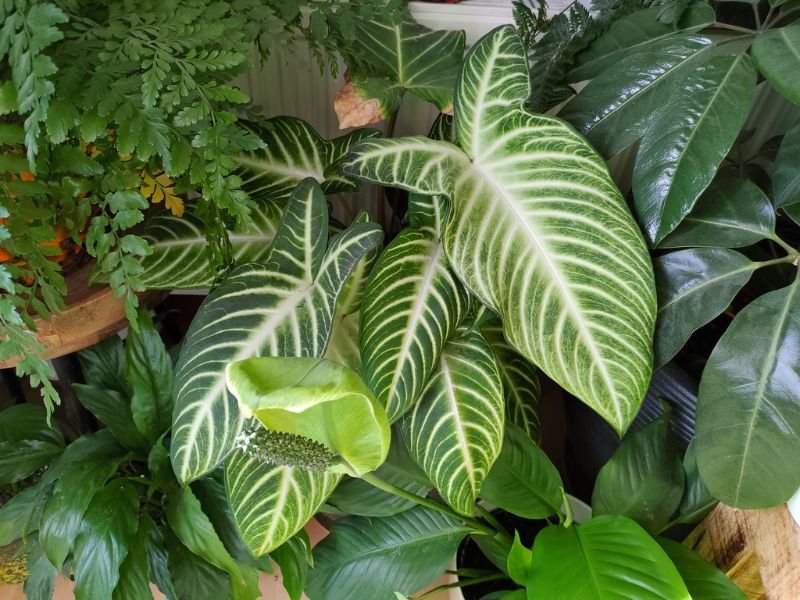
One more plant that comes from the Araceae family is xanthosoma. They require simple treatments, just make sure to provide them with indirect light, high humidity, and warm temperature, and only give your xanthosoma waters when you feel the topsoil, around the first 5 centimeters, is dry.
Why are some elephant ear plants expensive?
Some types of house plant that looks like elephant ears may not be so budget-friendly. Like the variegated alocasia which can cost you around 100$ to 700$ or variegated philodendrons, where it could be more than 10,000$ per plant. Yes, you read that right. But what makes these plants expensive?
It depends on several factors. First, the more unusual the color, the vein pattern, and the variety, the more money you have to spend. Second, it also depends on how rare the plant is. Will it be available throughout the year? Or is it just available once every three years?
Third, plants like xanthosoma, caladium, and alocasia are slow-growing, which means you need to invest more in giving them fertilizers. Some of these plants are also prone to diseases such as root rotting, wittering, and yellow leaves. If that happens, you need to do something to save them!
Lastly, most of these plants originate from tropical and subtropical areas. If you’re living in a colder area with less humidity, you have to provide them with a humidifier and extra warmth.
Closing words.
To conclude, growing plants that look like elephant ears is a fun thing to do besides they add beauty to your garden or home. There are some variations you can choose based on your color and size preference. Also take note that not all these plants are high-priced, even though the planting process could be quite demanding. We hope this article answers your questions. Happy gardening!

New author in the hood. Loves gardening and flowers are my spirit animals (yes I know they are not animals but I insist). I will be covering most of the flowers’ topics here and occasionally random though as well.






